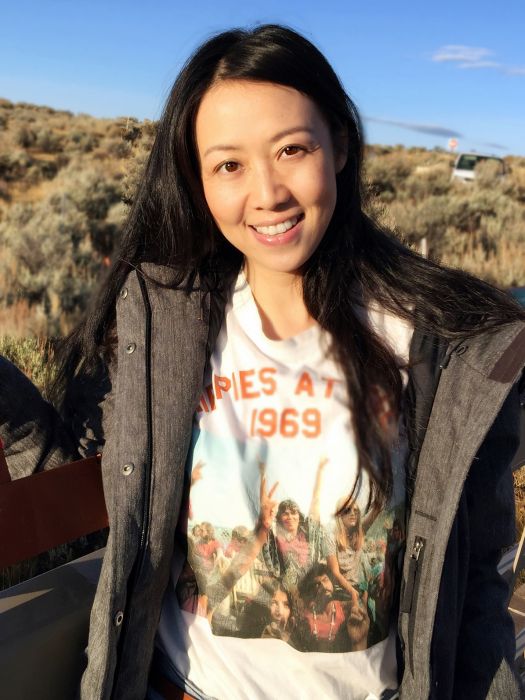人物經歷
教育經歷
2002年7月,四川師範學院 生物系 學士。
2007年1月,中國科學院古脊椎動物與古人類研究所 碩士。
2011年1月,中國科學院古脊椎動物與古人類研究所 博士。
研究工作經歷
2016年6月至2017年6月,The Australian National University,博士後。
2011年1月至2016年11月,中國科學院古脊椎動物與古人類研究所 助理研究員。
2016年12月至2021年12月,中國科學院古脊椎動物與古人類研究所 副研究員。
2021年12月至今,中國科學院古脊椎動物與古人類研究所 研究員。
主要成就
作為第一或主要研究人員,在國際具有重要影響力的期刊上發表論文30餘篇。主導開發三維表面數據編輯、渲染及VR互動設計軟體
Vayu 1.0(最新版本為1.1),主導開源三維可視化軟體
Drishti的系統更新和疊代工作,獲得軟體著作權證書4部,多次舉辦古生物三維可視化課程與培訓班。先後獲得“十大地質科技進展”(第1完成人),
國家自然科學獎二等獎(第4完成人)和“中國古生物十大進展”(第7完成人)等榮譽。曾在新媒體平台發布系列科普短視頻(玩骨頭的盧老師),在“中科院之聲”開設專欄(盧靜的奇物櫃)進行古生物科普宣傳工作。
2022年12月31日,參加《中國科學院2023跨年科學演講》。
研究內容
採用高精度CT ,同步輻射掃描和計算機三維重建復原等技術對早期硬骨魚類開展了精細的比較解剖學工作,為探討從硬骨魚綱起源到四足動物起源之間重要演化事件提供了關鍵資料。
社會任職
2017年-2020年澳大利亞科學院媒體學術顧問
2021年-今《動物系統學與進化研究方法》編委
2021年-今 《All Earth》編委
社會活動
2023年1月15日,參加《酷啊未來 中國科技創新之夜》。
所獲榮譽
2020年獲國家優秀青年基金資助。
發表論文
1.Y.-A. Zhu, S. Giles, G. C. Young, Y.-Z. Hu, M.Bazzi, P. E. Ahlberg, M. Zhu, and J. Lu* (2021) Endocast and bonylabyrinth of a Devonian ‘‘Placoderm’’ challenges stem gnathostome phylogeny. CurrentBiology, 31: 1112–1118.e4.
2.Y.-Z. Hu, Ajay Limaye, and J. Lu*. (2021). A 3DSegmentation & Reconstruction Method in Paleontology Using Drishti. Bio-101:e1010668. DOI: 10.21769/BioProtoc.1010668. (in Chinese)
3.Z.-H. Li, W. Wang, H. Hu, M. Wang*, H.-Y. Yi*,and J. Lu*. (2021) Reanalysis of Oculudentavisshows it is a lizard. Vertebrata Palasiatica, 59: 95–105.
4.Y.-X. Li, X. Liao, K. Bi, T. Han, J.-Y. Chen, J. Lu*, C.-P.He*, and Z.-H. Lu* (2021). Micro-CT reconstruction reveals the colony patternregulations of four dominant reef-building corals. Ecology and Evolution,00, 1–14. doi.org/10.1002/ece3.8308
5.Q. Li, Y.-A. Zhu*, J. Lu, Y. Chen, J.-H. Wang, L.-J.Peng, G.-B. Wei, and M. Zhu* (2021) A new Silurianfish close to the common ancestor of modern gnathostomes. Current Biology,31: 3613–3620.e2
6.A. M. Bailleul*, J. Lu, and Z.-H. Li*.(2021). DiceCT applied to fossilized hard tissues: a preliminary case studyusing a Miocene bird. Journalof Experimental Zoology Part B: Molecular and Developmental Evolution, 336:364–375.
7.Y.-Z. Hu, Ajay Limaye, and J. Lu* (2020).Three-dimensional segmentation of computed tomography data using DrishtiPaint: new tools and developments. Royal Society Open Science 7:201033.
8.Y.-X. Li, T.-Y. Han, K. Liang, J.-Y. Chen, J.Lu*, C.-P. He*, and Z.-H. Lu*. (2020) The 3D reconstruction of Pocilloporacolony sheds light on the growth pattern of this reef-building coral. iScience,23.
9.Y.-Z. Hu, Ajay Limaye, and J. Lu*. (2020). A spark of 3D revisualization: newmethod for re-exploring segmented data. doi:https://doi.org/10.1101/2020.08.01.222869, Preprint.
10. G. C. Young*, and J. Lu. (2020). Asia–Gondwanaconnections indicated by Devonian fishes from Australia: palaeogeographicconsiderations. Journal of Palaeogeography, 9: 8.
11. J. Lu*, G. C. Young, Y.-Z. Hu, T. Qiao, and M. Zhu*. (2019) The posteriorcranial portion of the earliest known Tetrapodomorph Tungsenia paradoxaand the early evolution of tetrapodomorph endocrania. Vertebrata Palasiatica,57: 93–104. doi: 10.19615/j.cnki.1000-3118.181031
12. J. Lu*, and M. Zhu*. (2019) The postparietal shield of thePragian dipnomorph Arquatichthys and its implications for therhipidistian cranial anatomy. Palaeoworld, 28: 543–549. doi:https://doi.org/10.1016/j.palwor.2019.07.004
13. Z.-J. Yin*, and J. Lu*. (2019) Virtual Palaeontology: when fossilsreconstructed by X-ray tomography. Palaeoworld, 28: 425–428.
14. Y.-Z. Hu, G. C. Young, J. Lu*. (2019) The UpperDevonian tetrapodomorph Gogonasus andrewsae from WesternAustralia: Reconstruction of the shoulder girdle and opercular series usingX-ray Micro-Computed Tomography. Palaeoworld, 28: 535–542. doi:https://doi.org/10.1016/j.palwor.2019.07.008.
15. Y.-A. Zhu, J. Lu, and M. Zhu*. (2019) Reappraisal ofthe Silurian placoderm Silurolepis and insights into the dermal neckjoint evolution. Royal Society Open Science, 6: 191181.
16. G. C. Young, R. L. Dunstone, P. J.Ollerenshaw, J. Lu, and B. Crook. (2019) New information on the giantDevonian lobe-finned fish Edenopteron from the New South Wales southcoast. Australian Journal of Earth Sciences, 67:221–242.
17. Y.-Z. Hu, G. Young, C. Burrow, Y.-A. Zhu*, and J. Lu.(2019) High resolution XCT scanning reveals complex morphology of gnathalelements in an Early Devonian arthrodire. Palaeoworld, 28: 525–534.
18. B. Choo, J. Lu, S. Giles, K.Trinajstic, and J. A. Long*. (2019) A newactinopterygian from the Late Devonian Gogo Formation, Western Australia. Papersin Palaeontology, 5: 343–363.
19. J. Lu*, S. Giles, M. Friedman, and M. Zhu*. (2017) A new stemsarcopterygian illuminates patterns of character evolution in early bonyfishes. Nature Communications, 8:1932.
20. Y.-Z. Hu, J. Lu,and G. Young*. (2017) New findings in a 400 million-year old Devonian placodermshed light on jaw structure and function in basal gnathostomes. Scientific Reports, 7: 7813. (#, 共同第一作者)
21. J. Lu*, M. Zhu*, P. E. Ahlberg, T. Qiao, Y-A Zhu,W.-J. Zhao, and L.-T. Jia. (2016) A Devonian predatory fish provides insightsinto early evolution of modern sarcopterygians. Science Advances, 2: e1600154.
22. J. Lu, S. Giles, M. Friedman, J. L. Den Blaauwen, andM. Zhu*. (2016). The oldest actinopterygain highlights the cryptic earlyhistory of the hyperdiverse ray-finned fishes. Current Biology, 26: 1602–1608.
23. J. Lu, Y.-A. Zhu, and M. Zhu*. (2016) From fish tohuman: Origin and early evolution of osteichthyans. Chinese Journal ofNature 38, 391–398. doi:10.3969/j.issn.0253-9608.2016.06.001 (inChinese with English abstract)
24. M. Zhu*, P. E. Ahlberg*, Z.-H. Pan, Y.-A. Zhu,T. Qiao, W.-J. Zhao, L.-T. Jia, and J. Lu. (2016). A Silurian maxillateplacoderm illuminates jaw evolution. Science354, 334–336.
25. M. Zhu*, X.-B. Yu, P. E. Ahlberg, B. Choo, J.Lu, T. Qiao, Q.-M. Qu, W.-J. Zhao, L.-T. Jia, H. Blom, and Y.-A. Zhu.(2013). A Silurian placoderm with osteichthyan-like marginal jaw bones. Nature, 502: 188–193.
26. J. Lu*, M. Zhu*, J. A. Long, W.-J. Zhao, T. J. Senden,L.-T. Jia, and T. Qiao. (2012). The earliest known stem-tetrapod from the LowerDevonian of China. Nature Communications, 3:1160.
27. M. Zhu*, X.-B. Yu, J. Lu, T. Qiao,W.-J. Zhao, and L.-T. Jia. (2012). Earliest known coelacanth skull extends therange of anatomically modern coelacanths to the Early Devonian. Nature Communications, 3:772.
28. M. Zhu*, X.-B. Yu, Choo, B., Q.-M. Qu, L.-T.Jia, W.-J. Zhao, T. Qiao, and J. Lu. (2012). Fossil fishes from Chinaprovide first evidence of dermal pelvic girdles in osteichthyans. PLos ONE, 7: e35103.
29. Qiao, T, J. Lu, M. Zhu*, and Long J. (2011).Cranial anatomy of a primitive osteichthyan Psarolepis based on high-resolutioncomputed tomography. Journal ofVertebrate Paleontology, 31 Supplement: 177.
30. J. Lu* and M. Zhu. (2010). An onychodont fish(Osteichthyes, Sarcopterygii) from the Early Devonian of China, and theevolution of the Onychodontiformes. Proceedingsof the Royal Society B, 277: 293–299.
31. J.Lu* and M. Zhu. (2009) The cranial anatomy of a new tetrapodmorph fish fromthe Lower Devonian of China. Journal ofVertebrate Paleontology, Supplement 29: 137A.
32. M. Zhu*, W.-J. Zhao, L.-T. Jia, J. Lu,T. Qiao, and Q.-M. Qu. (2009). The oldest articulated osteichthyan revealsmosaic gnathostome characters. Nature,458: 469–474.
33. J.Lu* and M. Zhu (2008). An Early Devonian (Pragian) sarcopterygian fromZhaotong, Yunnan, China. Vertebrata PalAsiatica, 46: 161–170.

